September 4, 2017
Sometimes in the late summer my mother and Annie Castagnola would get together to “put up” tomatoes. I don’t really remember paying much attention to the process but I was fascinated by the jars and jars of red orbs sitting on an enamel table in Annie’s garage at the end of the day.
Annie lived in a jewel-box of a mid-century-modern house on a quiet residential street in Westmont, a suburb of Johnstown, PA where I grew up. She was always immaculately made-up, her hair coiffed, and frequently dressed in muumuus.
She was also a chain-smoker. There was a very large abalone shell on the coffee table on her side porch that served as a communal ashtray. I was always amazed at the number of cigarette butts that would collect in that shell over the course of a visit.
Though Annie was a very good cook, she was mostly known for her baking. Some of you may remember me mentioning her in an early blog about Totos, Italian Chocolate Spice Cookies.
Growing up we used a lot of canned tomatoes. My mother made her long-simmered Southern Italian Style Ragu most Sundays. Each batch used about a quart of canned tomatoes. The number of jars of tomatoes that my mother and Annie “put up” was nowhere near the 50 or so that would have been needed just to supply my family’s Sunday dinner table, let alone what Annie needed.
Those home-canned tomatoes, though, were a treat when they were used and a potent reminder of cultural heritage and a more agrarian family history.
These days I turn our home-grown tomatoes into passata (puree) rather than canning whole tomatoes. It’s easier. The results can be frozen successfully eliminating pressure canning at my 8000-foot elevation. And, since there aren’t enough home grown tomatoes to supply all of our tomato-product needs (canned tomatoes, tomato puree and tomato paste being the primary ones) I’ve opted for the most expedient option.
Though we had more tomato plants when we lived in Chicago, I still use the same field mix of canestrini, lunghi, and beefsteak tomatoes to make passata.
The canestrini, an heirloom variety, are grown from seeds that we brought back from Italy about 20 years ago. They were given to us by my husband’s Great Uncle Faliero (Great Aunt Fidalma’s husband). Every year, seeds are lovingly removed from several tomatoes, spread out on waxed paper, and allowed to dry. Since these are heirloom, and not hybrid, tomatoes, they breed true. The seeds are used to start the following year’s tomato seedlings.
Canestrini are meaty and don’t have an excess of jelly surrounding the seeds. They can also be ugly if one’s vision of a tomato is a perfectly formed red orb. The taste, however, is superior.
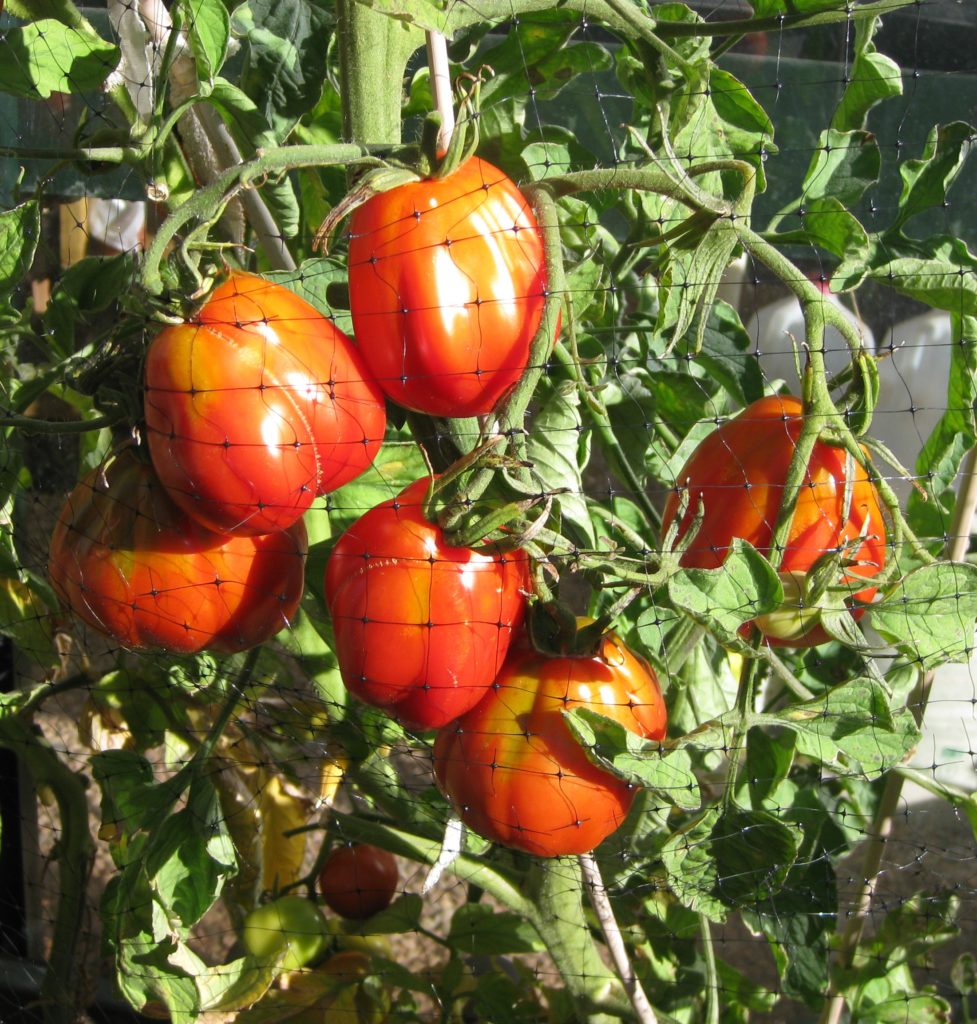
The lunghi seeds are imported from Italy and are available domestically as are the beefsteak tomato seeds. Mostly we grow the beefsteak tomatoes for eating but there are always more than enough so they get put into the field mix for the passata.
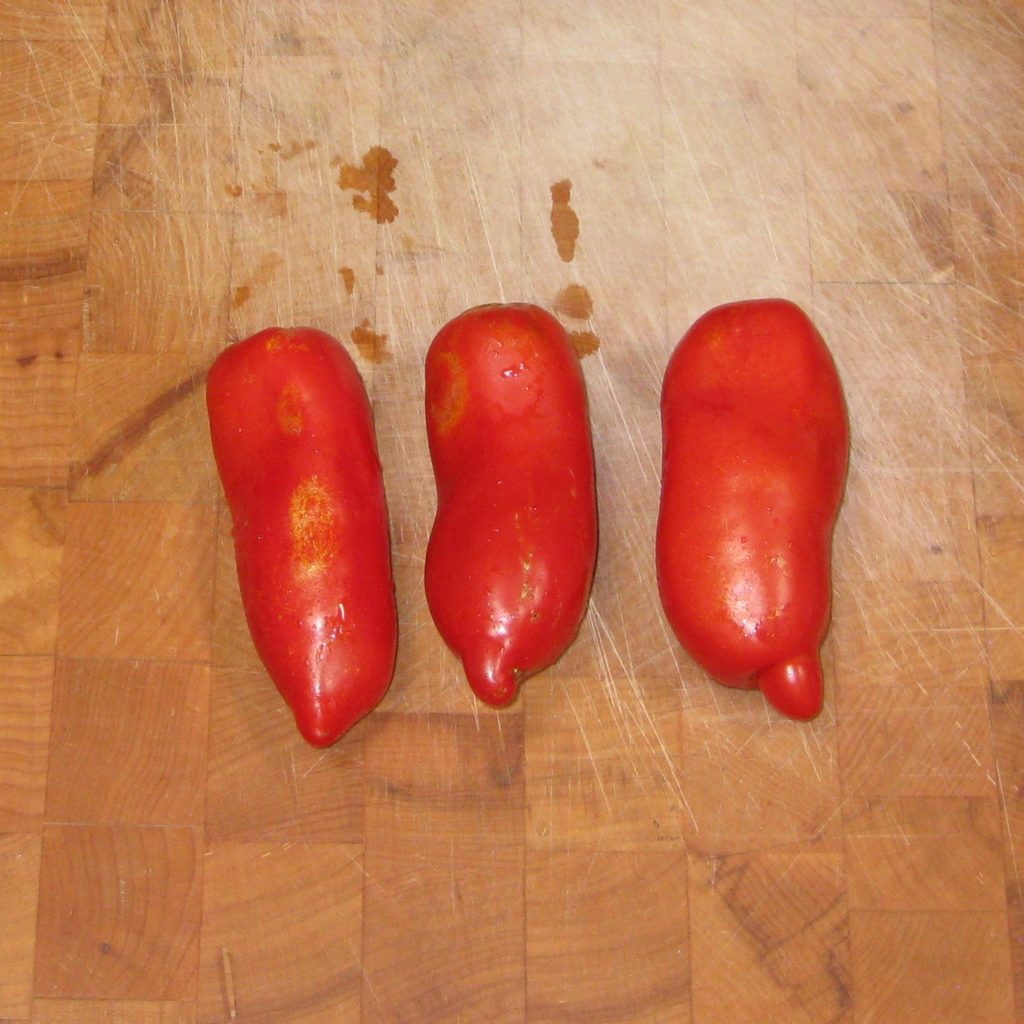
Making passata is really a breeze compared to canning whole tomatoes or making tomato paste. The tomatoes are washed, quartered, cored and coarsely chopped before being simmered into a pulp. They are then passed through an old-fashioned food mill, a step that only takes a few minutes, which eliminates the seeds and skin. They cook for about 2 ½ hours but it is mostly hands off other than the occasional stir.
Leaving the seeds and surrounding jelly in the chopped tomatoes means that the cooking time is a bit longer than it might otherwise be but there are two distinct advantages. Getting the tomatoes ready to cook is really quick. Perhaps more important, though, is that the jelly surrounding the seeds contains loads of naturally occurring glutamates which boost the savory “umami” quotient of the tomatoes.
If you have access to vine-ripe tomatoes, grab yourself 15 or 20 pounds and give this recipe a try. You won’t be sorry!
Click here for a video showing the process of making tomato puree.
Follow us
Click HERE to join our mailing list and you’ll never miss a recipe again!
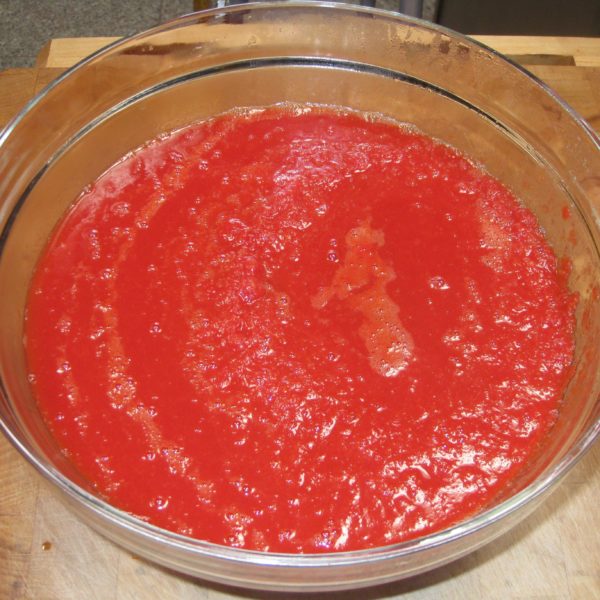
| Prep Time | 20 minutes |
| Cook Time | 3 hours |
| Servings |
quart
|
- 15-20 pounds vine-ripe tomatoes or however much you want
- salt 1 teaspoon for each quart of chopped tomatoes
Ingredients
|

|
- Wash and dry the tomatoes.
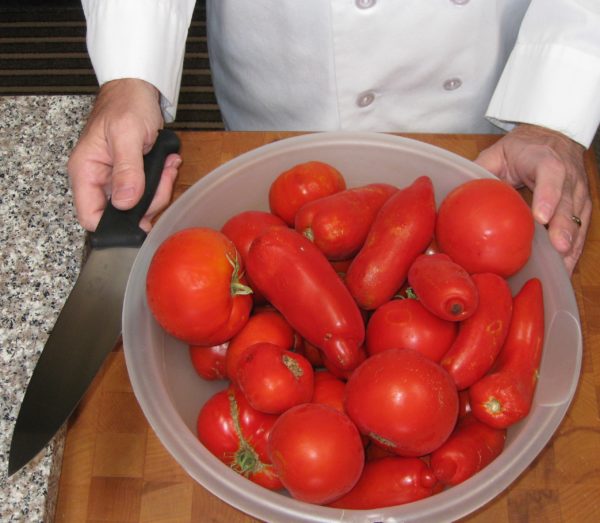
- Cut the tomatoes into quarters from top to bottom.
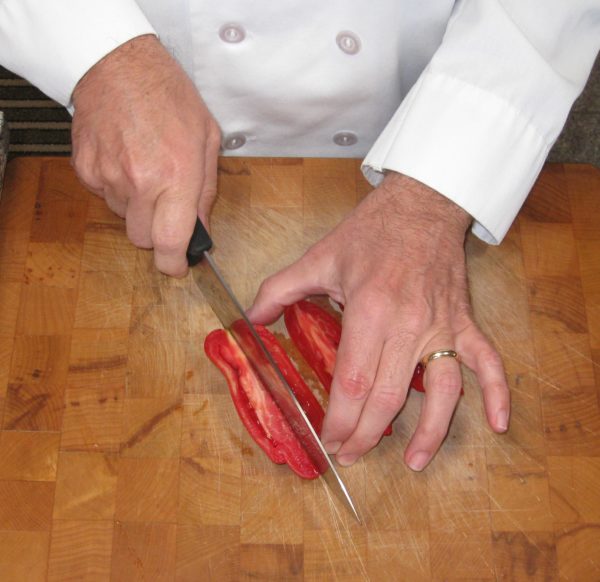
- Remove the hard bit where the stem attaches and any bad areas.
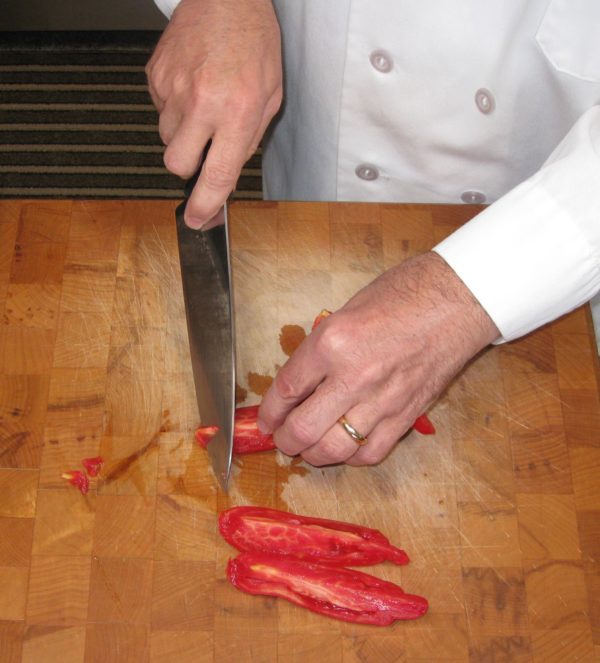
- Coarsely chop the tomatoes.
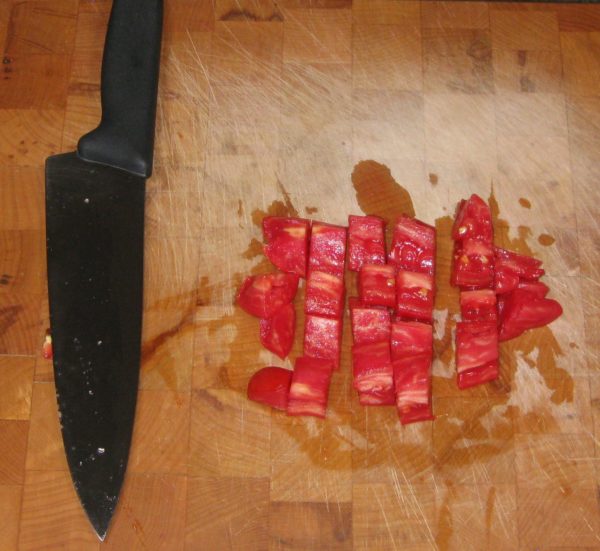
- Put the tomatoes into a heavy-bottomed, non-reactive pot (such as stainless steel).
- Add one teaspoon of salt for every quart of chopped tomatoes.
- Cover the pot and bring to a boil over medium-high heat. This will take approximately 10-20 minutes depending on volume of tomatoes.
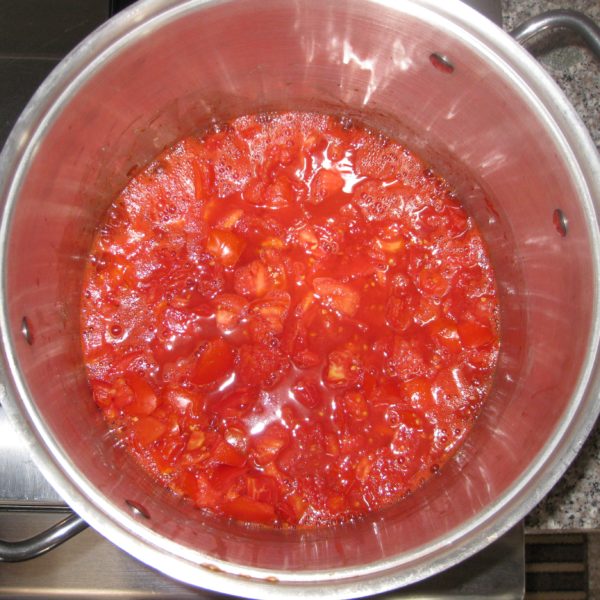
- Remove the cover. Stir the tomatoes.
- Boil gently, uncovered, for 2 ½ to 2 ¾ hours, stirring every 15-20 minutes. It takes a bit of practice to estimate how much to concentrate the tomatoes to get the desired thickness of puree but don’t sweat it, the tomatoes can be cooked further.
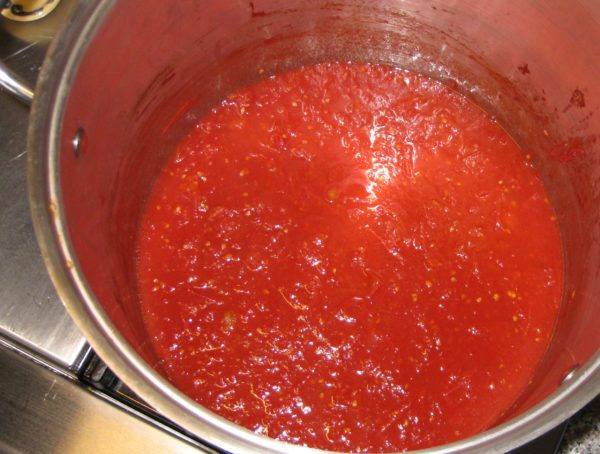
- Pass the cooked tomatoes through a food mill to remove skin and seeds.
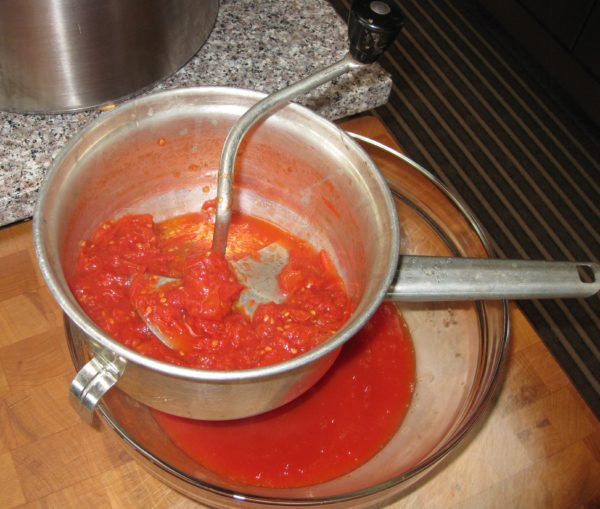
- If the puree seems too thin, return it to the pot and cook it a bit longer after passing it through the food mill.

- Portion and freeze or use as desired.
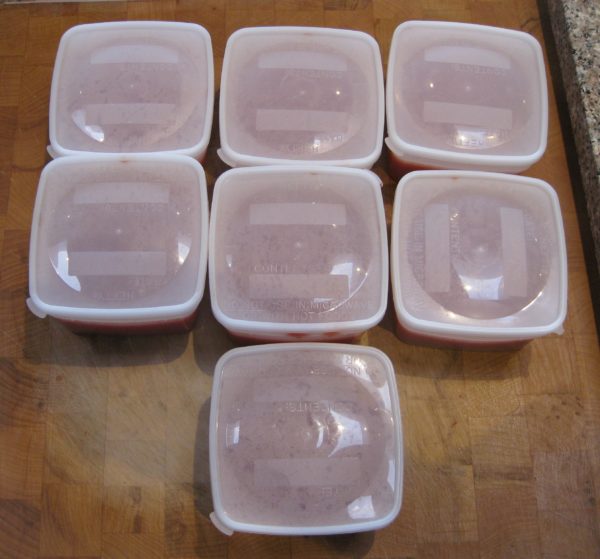
A rondeau is useful if you are going to prepare more than 20 pounds of tomatoes as it provides more surface area for evaporation than a deep sauce pan.
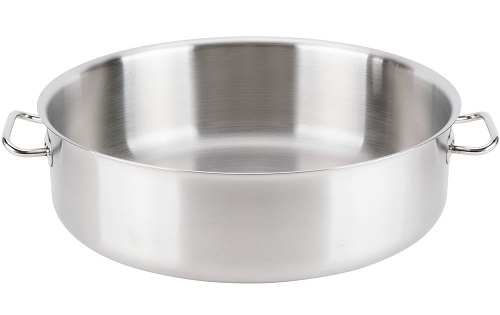
Copyright © 2017 by VillaSentieri.com. All rights reserved.

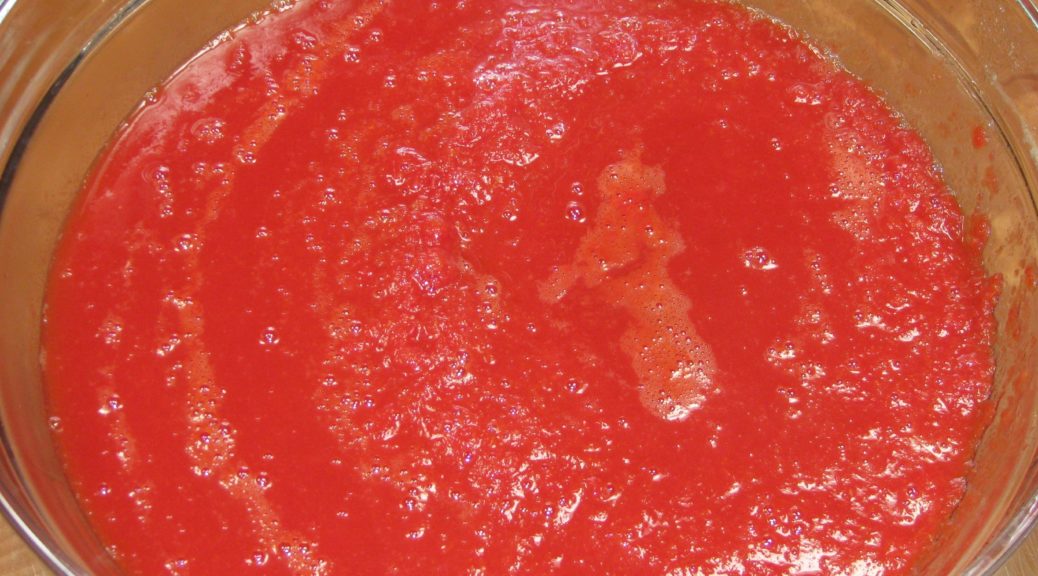
Gary
I just love and adore you!
Loved the pics from your party honoring relatives from Tuscany
I treasure these recipes and stories
Much love to you and Frank
You are so very welcome. We do not see enough of you and Pat!!!
Great idea! I like the idea of freezing rather than canning. Look forward to reading more. You liked a post of mine on twitter which is how I found you. Now I’m going to go back & follow you!
I’m glad you like the idea. It is really much easier and the quality is maintained very well by freezing.